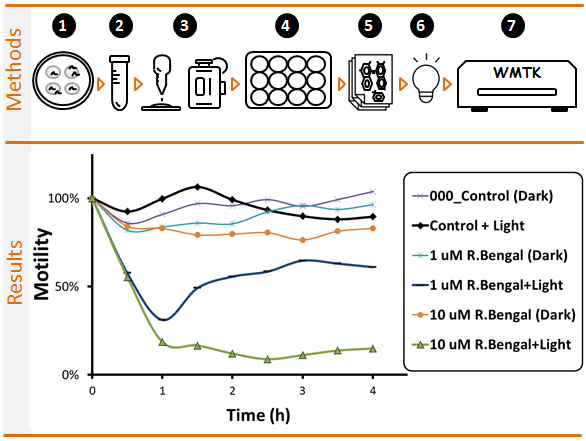Phototoxicity in C.elegans
Biological models, from microorganisms to higher organisms, have been thoroughly employed to evaluate phototoxic effects of chemicals in order to explore the potential of new drugs for PDT or to prevent environmental damage from xenobiotics.
Using WMicrotracker, it is possible to easily discover new phototoxics, as well as to look for novel small molecules, genes or natural compounds which interact with these chemicals. Below we present an example of application.
Validation of Phototoxics in C.elegans
In this experiment we can observe a dose response effect of Rose Bengal exposure on adult C.elegans, as well as the phototoxic effect when Rose Bengal is activated by light.
Methodology: (1)Grow synchronized populations of worms in NGM plates. (2)Remove worms from plates using buffer. (3)Count #worms in 10ul, and adjust volume to get [5worms/10ul]. (4)Transfer 90ul of worm solution to 96well microplates using multichannel pipette. (5)Incubate with potential phototoxic molecules. (optional:)Let worms to rest for 1h and measure basal activity using WMicrotracker. (6)Activate phototoxics with Light. (7)Register the plate with WMicrotracker.
References
Reliable Screening of Dye Phototoxicity by Using a Caenorhabditis elegans Fast Bioassay. Bianchi JI et al. PLoS One. 2015
<Back to Application Index>


